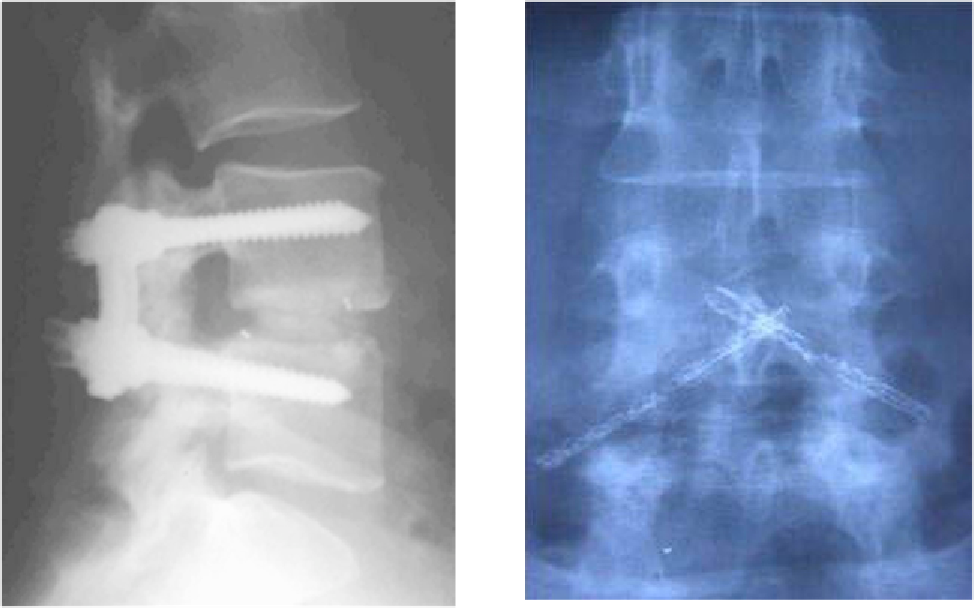Biomedical Engineering Reference
In-Depth Information
Figure 13.15
CFR-PEEK transpedicular screw and
a radiograph of a fused cervical spinal segment. The
screws are radiolucent because of the addition of
0.5% tantalum fibers. Images courtesy of Invibio.
Figure 13.14
Radiograph of a fused lumbar spinal
segment using a Brantigan CFR-PEEK cage.
Image
courtesy of DePuy Spine.
CFR-PEEK is also used for transpedicular fusion
in the cervical spine, where radiographic imaging is
crucial to permit safe insertion of the devices using
computer-assisted navigation with fluoroscopic
guidance (
Fig. 13.15
). The CFR-PEEK screws also
contain 0.5% tantalum fibers to provide sufficient
visualization using fluoroscopy
[50]
. In vitro studies
have confirmed the feasibility of using CFR-PEEK
screws for transpedicular fixation
[50]
, but clinical
results using these devices have not yet been reported
in the literature.
shared with metallic cages, and thus are not unique
to the use of PEEK
[51]
. As with any load-bearing
implant, wear and fracture are also concerns with
PEEK spinal implants. Our experience with these
implant-related complications is largely drawn from
the Brantigan cage, because of its extensive clinical
history. As of 1998, no implant-related complica-
tions of carbon fiber cages had been reported in the
literature. Tullberg
[52]
described the fracture of
a Brantigan cage in a case study of a failed fusion.
Togawa et al.
[53]
studied biopsy samples from
radiologically successful fusions with Ti alloy or
Brantigan cages. Researchers noted particles of
debris in biopsies from four of the five carbon fiber
cages and in one of the four titanium cages, but no
evidence of an inflammatory reaction to the particles
was seen. The overall clinical significance of
particulate debris and fracture is unclear for the
Brantigan cage, given the strong evidence of long-
term successful fusion using this design and similar
findings to those in metal cages.
13.6 Subsidence and Wear of
PAEK Cages
Although most of the literature for PAEK
biomaterials in the spine focuses on biomechanical
stability or clinical outcomes such as fusion, rela-
tively few studies provide insight into the unique
limitations of the material when used in cage
implants. The potential for some implant compli-
cations of PEEK cages, such as subsidence, are

